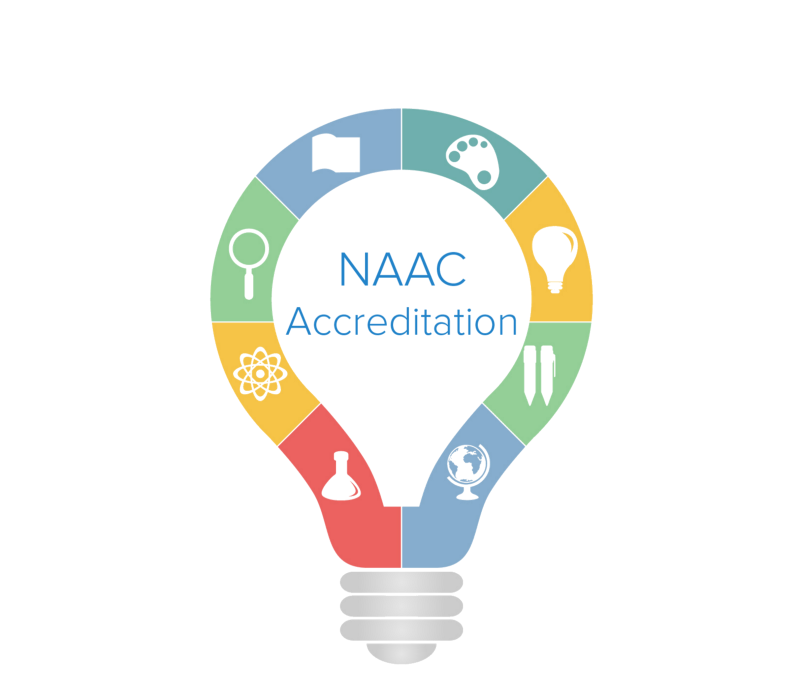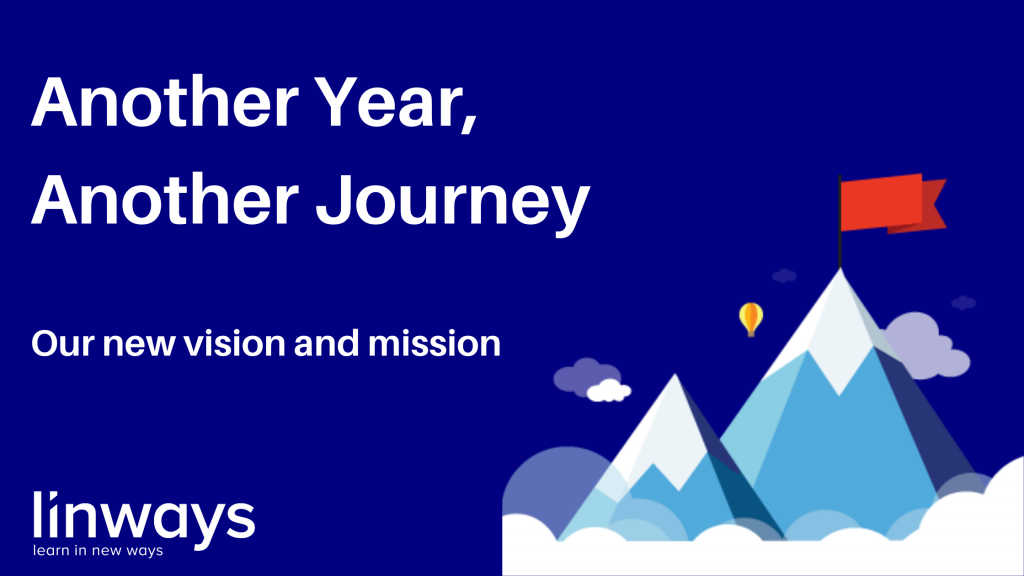Where should a modern teacher draw the line
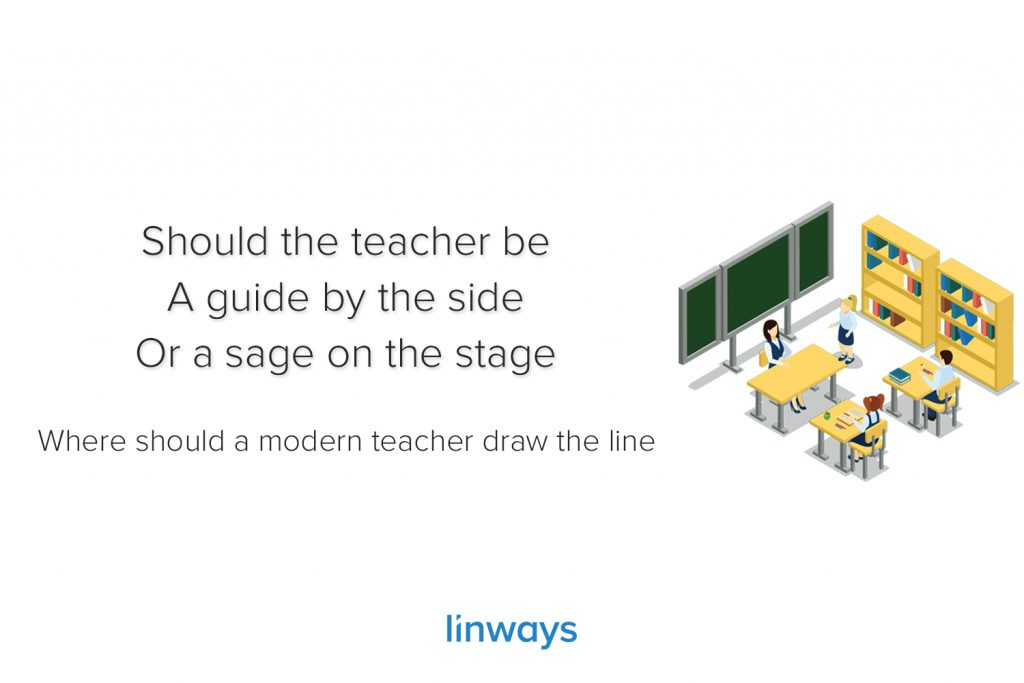
We here at linways is always curious about these education-related theories and beliefs. We try to learn and share about education and pedagogy to have a better understanding on how and why our system work as it does. The old “sage on the stage vs guide by the side ” argument is one such that caught our attention lately.
There are many interpretations to our pedagogical practices over the years. Teaching, is always placed under scrutiny and speculative assessments to measure their effectiveness and efficiency. Since the past century or so, we have come a long way to identify new teaching methods and better understanding of the way students learn in the classrooms. Many experts believe that lecturing is not a complete solution and we should place student at the centre to devise a better plan for education.
So who is the sage on the stage?
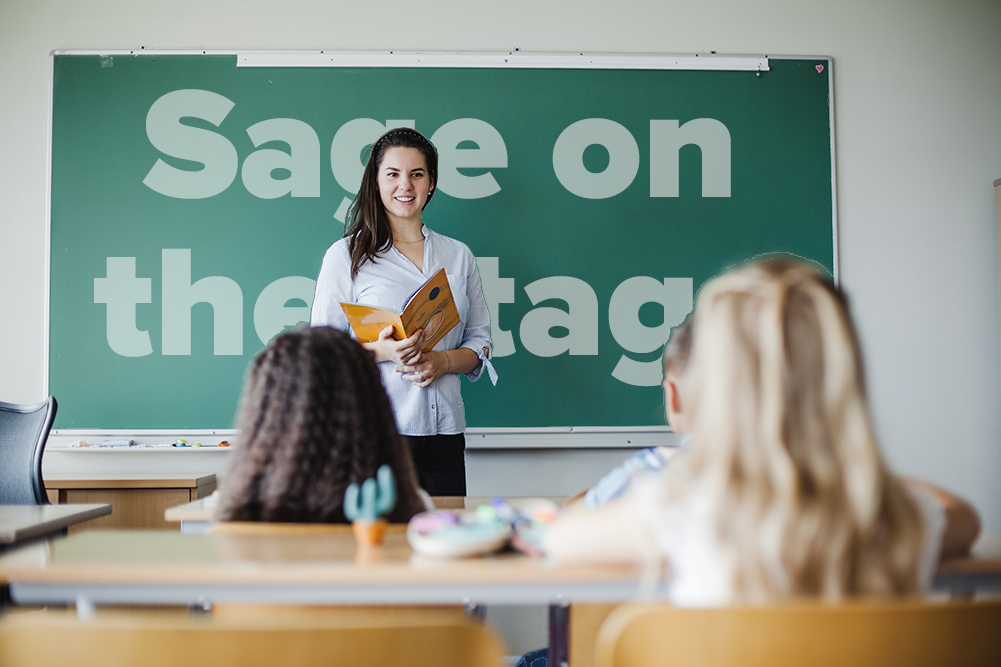
It’s ofcourse the teacher. Sage on the stage essentially points to the teacher sharing relevant information with minimal input from the part of students. And it’s this very reason why many academicians turn their faces away from this method. Being had to sit through many a bad lectures ourselves, we may feel the same.
However, a good lecture encourages the student to listen, process, and think. Interestingly, these three are listed among the 21st century essential soft skills. At least in some cases, it’s good to just listen to the teacher and try to understand what he/she has to say about the topic. A lecture can be really efficient to pass on the exact same information to a lot of people at once. There’s a reason why this argument calls the teacher a sage. They know the topic. Listening to their presentation helps the student to think more deeply and seek more knowledge if needed.
We can’t argue to completely base the entire teaching on lectures alone though. There should be enough time to reflect upon what the teacher has taught, and then practise and act upon it. The sage on the stage is not that bad of an idea in and on itself. Having a wise person talking to you about the curriculum can be inspiring and would help to lift the spirit in the classroom. Giving up on the lecture is like rejecting our kids the opportunity to subjectively learn about the base and foundation of the topic.
Then comes the guide by the side
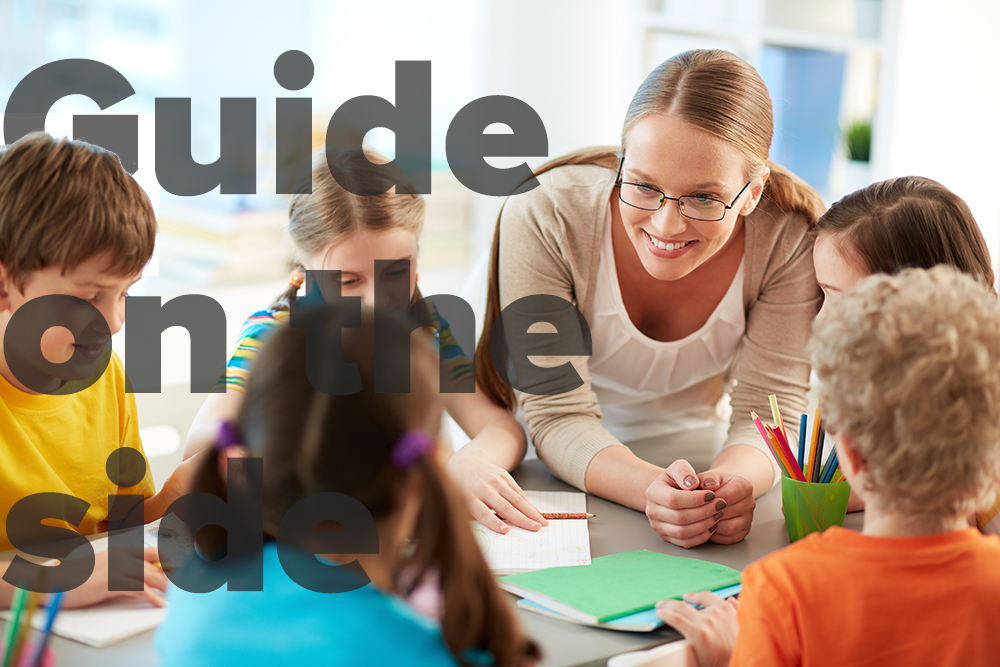
This is one of the most popular notions that define the 21st century education. A guide on the side means the teacher simply directing the slow of the education and letting the student make the journey themselves. A teacher is only a mentor, not someone who get themselves involved in every minute detail. It’s learner-centricity at it’s finest.
Why many of the reformative notions in education relies on the ‘guide by the side’ model is because it emphasizes on the student’s learning ability and pace. The focus is set on learning instead of teaching and completing the curriculum. Mentoring the students to achieve learning goals and creating a positive impact in their learning curve to raise the bar is a tough feat.
Student engagement is high in this approach. They wants to understand and correlate on how they can confidently apply the skills they learn in a meaningful way to their lives outside of school. Children deserves to know what they gain and what they will be able to do with their education. Knowing the ‘WHY’ helps the students to contribute more and motivates them to take efforts to reach the goal. That is how a guide helps you. They show you the way and leaves you the choice to independently reach the destination.
Need a perfect blend of these two.
The key in developing a great classroom for your students is about finding the perfect blend of these two. As a teacher, you should use both of these styles and combine them to suit your particular needs.
Besides being a catchy phrase, we should look more closely at this “sage on the stage vs guide by the side” statement to evolve and improve upon the preconceived thoughts. You can begin by giving lectures or presentations on core concepts and foundation topics to build base. Then move on to group discussions, activities, and interactive sessions to spread ideas and perspectives. This would also help you analyse where your presentation has fallen short and where you need to focus more. You can also make use of flipped learning concepts and blended learning methods to make sure that both these modes provide maximum results. Also consider plotting assessments to measure the effectiveness of both of these methods.
There is no one-size-fits-all approach in education. We cannot completely rely on lectures or group sessions alone to teach. Both has its own merits and shortcomings, so it’s only the teacher who can choose what’s best for their students.
Also published on Medium.


